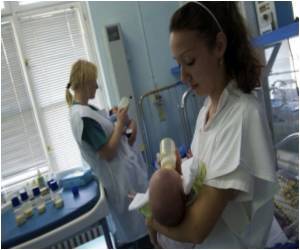A sugar molecule in human milk that is thought to protect infants from pathogens has been synthesized by a microbial engineer.

To learn more about the HMO's function, Miller would like to do research with 2FL in newborn piglets, an excellent model for the human infant.
Unfortunately, 1 milligram of 2FL costs $100, meaning a single study would require $1 million for the HMO alone, he said.
Microbiologist, meet metabolic engineer. Yong-Su Jin, a departmental colleague and professor in the U of I's Institute for Genomic Biology, believed he could synthesize this oligosaccharide found in breast milk using a strain of E. coli engineered for that purpose.
A new postdoctoral researcher in Jin's laboratory had done some of the legwork for such a project in Korea, and they used their combined experience and expertise to engineer an HMO that can be produced very cheaply and quickly: 1 gram of 2FL per liter of E. coli broth. That means it's possible to produce 2FL in the lab, making Miller's piglet research feasible, he said.
"E. coli makes a starting material for 2FL as part of its normal metabolism, and that suggested to us that it was possible to use E. coli to produce 2FL," Jin said.
Advertisement
The next step was developing an E. coli mutant that can assimilate lactose. "Because the engineered mutant cannot use the lactose for its own growth, it instead uses lactose to make great quantities of 2FL, the HMO that many researchers want to study," he said.
Advertisement
The research has other interesting possibilities unrelated to infant nutrition, he said.
Jin and Miller believe that their work has pharmaceutical applications. "Adding 2FL to the food of soldiers on deployment could keep them out of sick bay. More than half of all soldiers in the field are incapacitated at some point with diarrheal illness caused by Campylobacter jejuni," Jin said.
A second use might be reducing the number of Campylobacter infections that originate in raw or undercooked poultry. "If chickens consumed poultry feed containing 2FL, pathogens would bind to this oligosaccharide instead of the mucosal lining of the bird's intestine and be eliminated well before the chicken arrived at your supermarket," Miller added.
Source-Eurekalert















